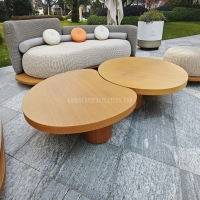Welcome to the website for landscape facilities products and knowledge.
How does the table’s design support modularity or reconfiguration in dynamic spaces?
In today's evolving work environments, table design plays a crucial role in supporting modularity and reconfiguration. Modern tables incorporate innovative features that allow spaces to transform according to changing needs. The fundamental principle lies in creating furniture pieces that can be easily rearranged, combined, or separated to serve multiple purposes.
Modular table systems typically feature standardized connection points, enabling various configurations through interchangeable components. These designs often incorporate lightweight materials, casters for mobility, and adaptable shapes that fit together like puzzle pieces. The integration of technology-friendly elements, such as built-in power management and cable organization systems, further enhances their flexibility.
Reconfigurable tables frequently employ folding mechanisms, adjustable heights, and transformable surfaces that can expand or contract based on user requirements. Many designs incorporate nesting capabilities, allowing multiple units to store compactly when not in use. The use of durable yet lightweight materials ensures that reconfiguration can be accomplished efficiently without compromising structural integrity.
The true value of these designs emerges in dynamic spaces where functional requirements change throughout the day. A single table system might serve as individual workstations in the morning, transform into collaborative clusters for afternoon meetings, and rearrange for social gatherings in the evening. This adaptability maximizes space utilization while reducing the need for multiple specialized furniture pieces.
Advanced table designs also consider acoustic management, visual privacy, and ergonomic support within their modular framework. Integrated screens, sound-absorbing materials, and adjustable lighting components can be incorporated into the modular system, creating environments that support various activities without requiring permanent structural changes.
The future of table design continues to evolve toward greater interoperability, where furniture pieces from different systems can work together seamlessly. This approach supports sustainable design principles by extending product lifespan through adaptability rather than replacement. As workspaces continue to transform, table design will remain at the forefront of creating environments that can quickly respond to organizational needs and user preferences.
Related search:

Recommendation
Elliptical metal outdoor table with nested design, resembling wood grain, round table